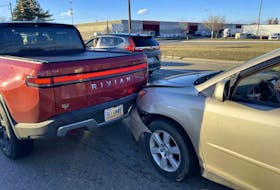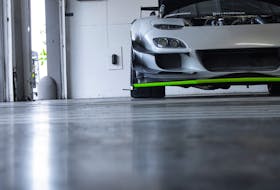Paul Kennaley is one of the automotive service technicians whose comments on maintenance-related topics I often share with readers.
He’s also a trusty pal of mine who has, lately, been rebuilding a 1991 Chevrolet 454 SS, which is a properly-badass nineties muscle-truck.
The other night, over a grown-up beverage in his home garage, we had a look at this old-school hot-rod pickup, and in particular, its 454-cubic-inch V8 engine.
“It’s a torque monster,” Kennaley told me. “This doesn’t drive down the road, it shifts the earth underneath it!”
Obviously, this is a massive exaggeration, but this use of a common saying among car enthusiasts made me wonder: How much torque would a vehicle actually need to move our planet?
I did some Googling on how I might approach the calculations to figure that out. Then, I remembered that my brain is not wired for performing mathematics. Hell, I even have to bust out the calculator in a restaurant to figure out what to tip.
So, I contacted my former high school physics teacher and fellow car-guy, Rob Boucher. Some 20 years ago, I was one of Boucher’s students. Today, Boucher (who says I may now call him Rob) is a physics teacher, and the Program Leader for Sciences and Technological Studies at Bishop Alexander Carter Catholic Secondary School in Sudbury, Ontario.
We talked, theorized how the calculations might go, and then, 20 years after I finished his high school physics classes, Boucher gave me some physics homework.
In the middle of August.
Yay me!
I nervously started the calculations. There was some back and forth, as my physics skills are a little rusty. Turns out, this is some big math, with some big numbers, and it took nearly two weeks to arrive at the answer, which we’ll go into below.
But let’s frame up the question, first.
Our calculations were based on moving a solid sphere, equal to the generally-accepted figures for the size and mass of our planet, from stationary (0 revolutions per day) up to its current rotation (one revolution per day) in a time of one second.
We ignored the effects of numerous variables (the sun’s gravity, the Earth’s oceans, and the fact that the earth is neither an actual sphere, nor totally solid) to keep things simple. So, this will be a ballpark figure.
As this exercise deals in causing a rotation of the earth, Boucher reminded me that force to push an object in a straight line is called “work,” not torque.
“Torque is similar, but it imparts a rotational force, not a force in a straight line” he said.
Planets move in rotations, not straight lines, after all. That’s Grade 11 physics.
Boucher explained: “the big picture here is that the torque required is equal to the change in angular momentum over time.”
The formula we used looks like this:
- Torque (T) = Change in angular momentum/Time
- Also, here’s what we know:
- Mass of our planet: 6,000,000,000,000,000,000,000,000 kilograms (6 septillion kilograms, or 5.974x1024 kg).
- Radius of our Planet: 6,370 kilometres
- Starting: 0 revolution per day
- Ending: 1 revolution per day
- Time: 1 second
Alright, so how much torque would you (hypothetically) need to bring our six-septillion kilogram planet from a standstill to a one revolution-per-day rotation around its axis, in a time of one second?
According to our calculations, the required torque is 5,201,800,000,000,000,000,000,000,000,000,000 lb.-ft. That’s 5.2018x1033 (or 5.2 decillion) lb.-ft. of torque. The long-hand figure has 34 zeros in it, if you’re wondering. That’s a hell of a lot of torque.
Given that the most powerful street-legal cars today have, maybe, 700 lb.-ft of torque, it’s safe to say that none (or even, all of them) would have any effect on the Earth’s rotation.
In fact, with Kennaley’s Silverado SS making its factory-rated 405 lb.-ft. of torque, you’d need about 12,844,000,000,000, 000,000,000,000,000,000 of them to get the job done — give or take.









